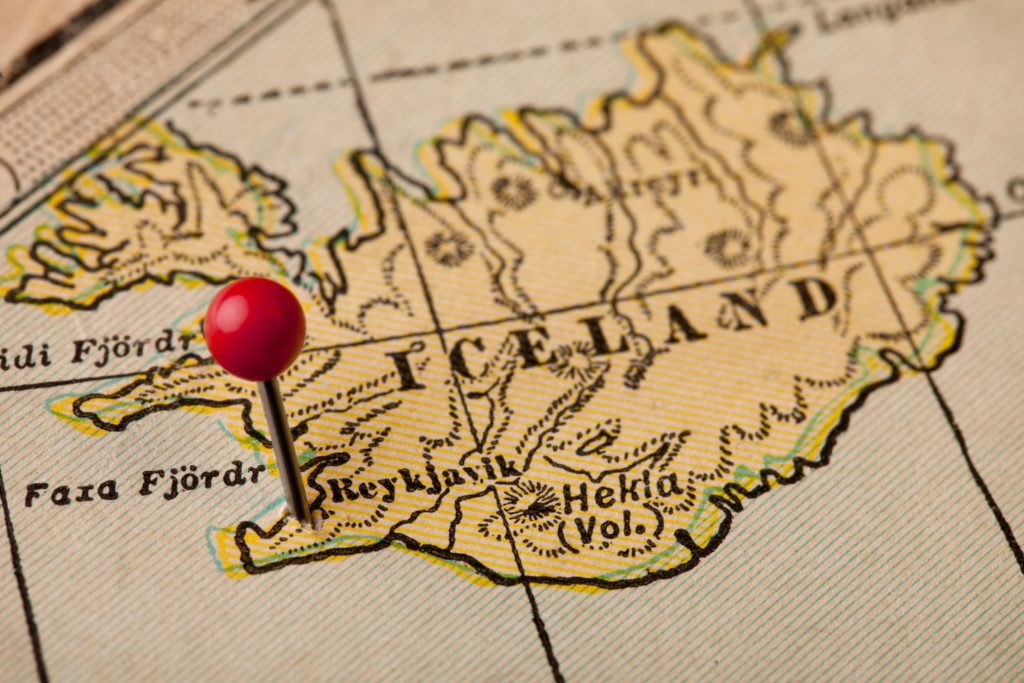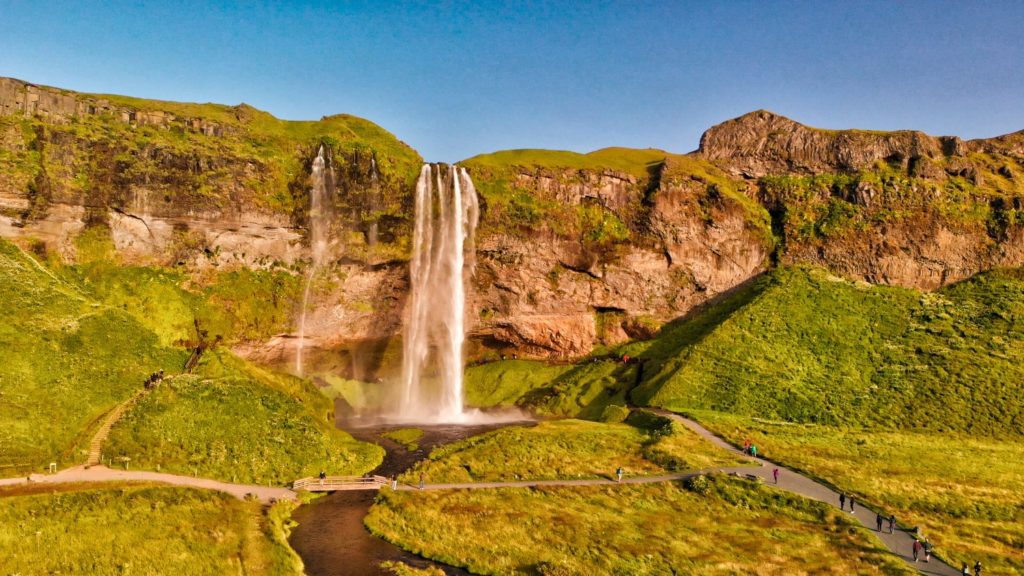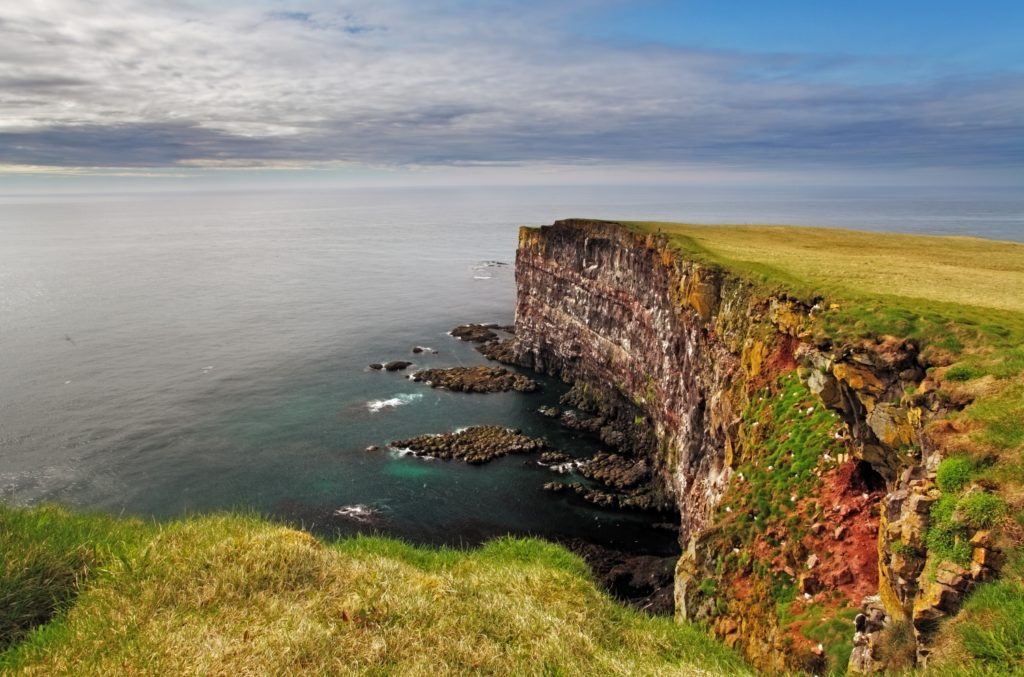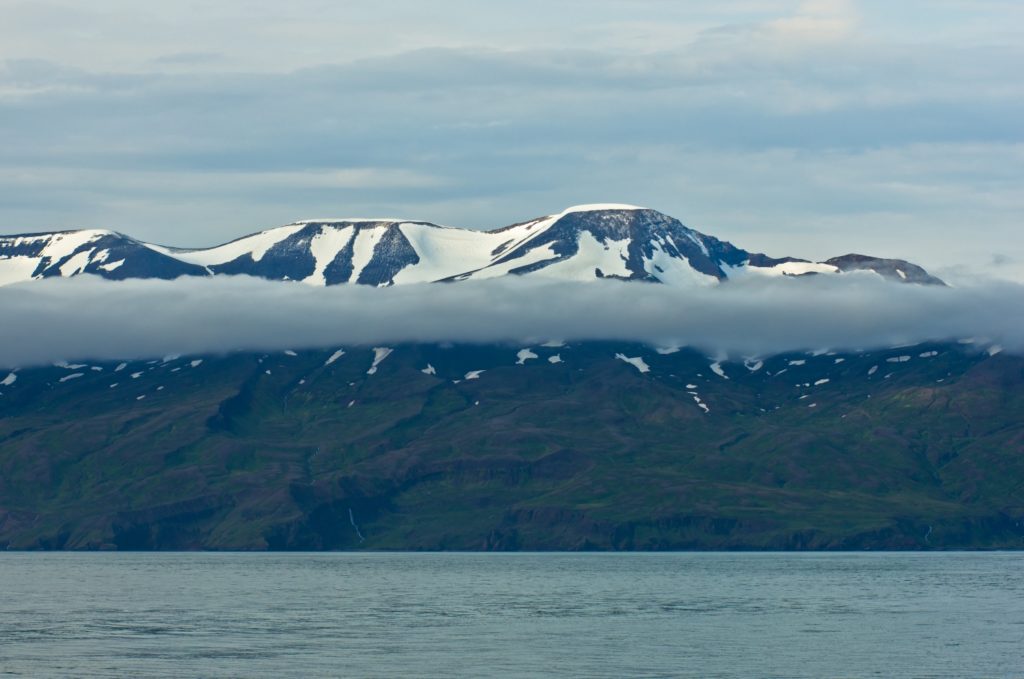In a country brimming with contrasting landscapes, it’s easy to speculate about the alternative names that history could have assigned to Iceland. Why not Fireland or Glacierland? Maybe even Lavaland has a certain ring to it?
Due to its remote location in the North Atlantic, Iceland was one of the last landmasses on Earth to be populated, with the first settlers arriving in the 7th Century. If we delve into the opening chapters of Iceland’s rich history, it appears that different people discovered and named the country several times over.
Each theory sheds light on the formidable cultural forces that shaped Iceland. Here we unravel some of the country’s earliest history to explore why Iceland is called Iceland.
Iceland or Island?

In recent years, archaeological evidence has emerged, which indicates that Celtic-speaking people from Scotland and Ireland inhabited Iceland from around 800 AD – over 70 years before the first Vikings arrived.
At Kverkarhellir cave on Seljaland Farm, academics unearthed sediment deposits dating back to c.800 AD. At a second site in the Seljalandshellar cave group, archaeologists revealed 19 large and four mid-sized wall carvings – representing the Christian symbol of the cross. While these are more difficult to date, they closely resemble early medieval crosses seen in western Scotland.
There are over 200 manmade caves located on farmlands across south Iceland. The early inhabitants of these caves are thought to have connections to the Irish monastic communities of the Scottish islands. So, what did these early settlers call Iceland?
It has been suggested that the Celts named this new land ‘Island.’
If you’re hiring a car during your trip to Iceland, the south offers the popular Southcoast Drive route, which navigates the epic coastline favored by these early Celt settlers – taking in waterfalls, hot springs, natural pools, black sand beaches, and glaciers along the way.

The Celtic theory puts an interesting slant on the origin of Iceland’s name. While Icelanders today do call Iceland: Iceland, it is written as Ísland and pronounced Ee-sland. In other languages, the name for Iceland is not connected with ice but does link to the word ‘island.’ Despite this, the Vikings, not the Celts, typically take the credit for naming Iceland.
Several adventurous Norsemen lay claim to discovering and naming Iceland. Their tales of daring do are well documented in two pivotal books in Iceland’s cultural history: Íslendingabók and Landnámabók. Written in the 12th Century, these books are the earliest records of the discovery and settlement of Iceland, and they reflect generations of Viking oral history.
So who did name Iceland?
This honor is usually given to early Norwegian settler Hrafna-Flóki Vilgerðarson. In c.868 AD, Flóki crossed the sea from Norway to Iceland. Traveling with his family, crew, livestock, and three ravens (Hrafna is Icelandic for raven), his goal was to settle in a new land discovered by earlier Viking adventurers: Naddoður Ásvaldsso and Gar∂ar Svavarsson (more on them later).
The story goes that on departure from the Faroe Islands, Flóki released his three ravens. The first raven flew back to the Faroes; the second returned to the boat, but the third raven flew northwest and did not return. This suggested that land was close, and Flóki set a north-westerly course.
The raven did lead the ship to Iceland, and Flóki set up camp in Vatnsfjörður at Barðaströnd on the southern shore of the Westfjords peninsula. Unfortunately, after a pleasant summer, failure to prepare well for the harsh Icelandic winter resulted in all the livestock perishing.
This group of early settlers was forced to leave. It is said that before returning to Norway, a despondent Flóki hiked up the mountains in the Westfjords, where he witnessed floating icebergs in Vatnsfjörður and ta-dah: Ice + Land became Iceland.*
Today, much of the Westfjords remain wild and unspoiled, making it perfect for nature fans, and hiring a car is the best way to reach remote places like Látrabjarg, one of Europe’s largest bird colonies. A great place to spot a puffin!

Once back in Norway, Flóki spoke bitterly of the land he called Iceland. However, one of his crewmen felt differently and described a paradise where ‘even the grass dripped with butter.’ So, it’s perhaps not surprising that many more Vikings followed in Flóki’s footsteps, and his cursed name did little to deter them from wanting to settle in Iceland.
A few years later, Ingólfur Anarson successfully settled on the island, and the country’s Viking Age began. It speaks to the irresistible magic of Iceland that even Flóki eventually chose to return as a permanent settler too.
*This Viking penchant for a ‘say what you see’ approach to naming places is quite common. Take Reykjavik, for example, which translates as ‘smoky bay’ due to the active volcanic steam vents in the area.
The names that didn’t stick
Before Flóki and his ravens took flight for Iceland, a Norwegian called Naddoður Ásvaldsso was blown off course while sailing from the Faroe Islands to Norway. Naddoður landed in the east of Iceland in the summer. Some records suggest he stayed for the season, but after failing to find any signs of life, he returned to sea, naming this new territory Snæland or Snowland.
As lovely as it sounds, Snowland didn’t catch on. Neither did the name put forward by Swedish adventurer Gar∂ar Svavarsson. We would now be living on Gardar’s Island if he had succeeded. Svavarsson landed in Iceland in c.860 AD when a storm in Pentland Firth blew his ship off course and into the North Atlantic.

Approaching Iceland from the southeast, Gar∂ar followed the coastline west and eventually discovered that this mysterious new land was an island. He landed at Skjálfandi, a bay in northern Iceland, and explored the area for about a year from his base in Húsavík, which today is part of the fantastic Diamond Circle self-drive route.
Before his departure, Svavarsson (rather modestly) declared that the newly discovered island should be known as Garðarshólmu or Gardar’s Island. What a shame for poor old Gardar that this name didn’t stick either.
The alternative name?
We’ve speculated that Fireland, Glacierland, or Lavaland could make equally apt names for Iceland. However, if Flóki had chosen another mountain to climb, the view and resulting name could have been very different.
But have you ever wondered why Iceland is very green and Greenland is very icy? It’s almost like they switched names! Especially when you consider that only 11% of Iceland is actually covered by a permanent ice sheet, compared to over 80% of Greenland.
This ironic observation sits behind a commonly shared myth that early Viking settlers named Iceland to deter would-be settlers from flocking to their new-found paradise. After all, who would choose to live in a Land of Ice – especially when nearby Greenland sounds so appealing?
The truth is more about climate change than a cunning Viking conspiracy.
Scientific data shows that from 800–1300 AD, southern Greenland was significantly greener and warmer. So, when Erik the Red landed in Greenland* in 982 AD, his chosen name for the country made perfect sense. However, the Little Ice Age of the 14th Century caused temperatures in Greenland to plummet. This colder climate devastated crops and forced the early Norse settlers to abandon the country.
Today, we’re seeing the impact of climate change again, as Greenland’s ice sheets melt due to global warming, creating space for greener scapes. To balance everything up, we will likely see more ice in the Land of (Fire and) Ice in the future too. As glacial meltwater cools the North Atlantic, the Gulf Stream – which currently keeps Iceland a balmy 10 degrees warmer than Greenland – is predicted to slow, bringing colder climes to Iceland.
* Of course, Greenland already had a name given by its native Inuit population. Today’s Greenlanders have reverted to this original name; they call their country Kalaallit Nunaat, which means ‘Land of the People.’
So, now you know all about Iceland’s name and some of its fascinating Celtic and Norse history. Why not follow in Flóki’s footsteps (ravens are optional) and come to get to know our country a little better?
You’ll find plenty more practical tips and inspiring ideas across our blog for the best ways to plan a trip of a lifetime.
Back